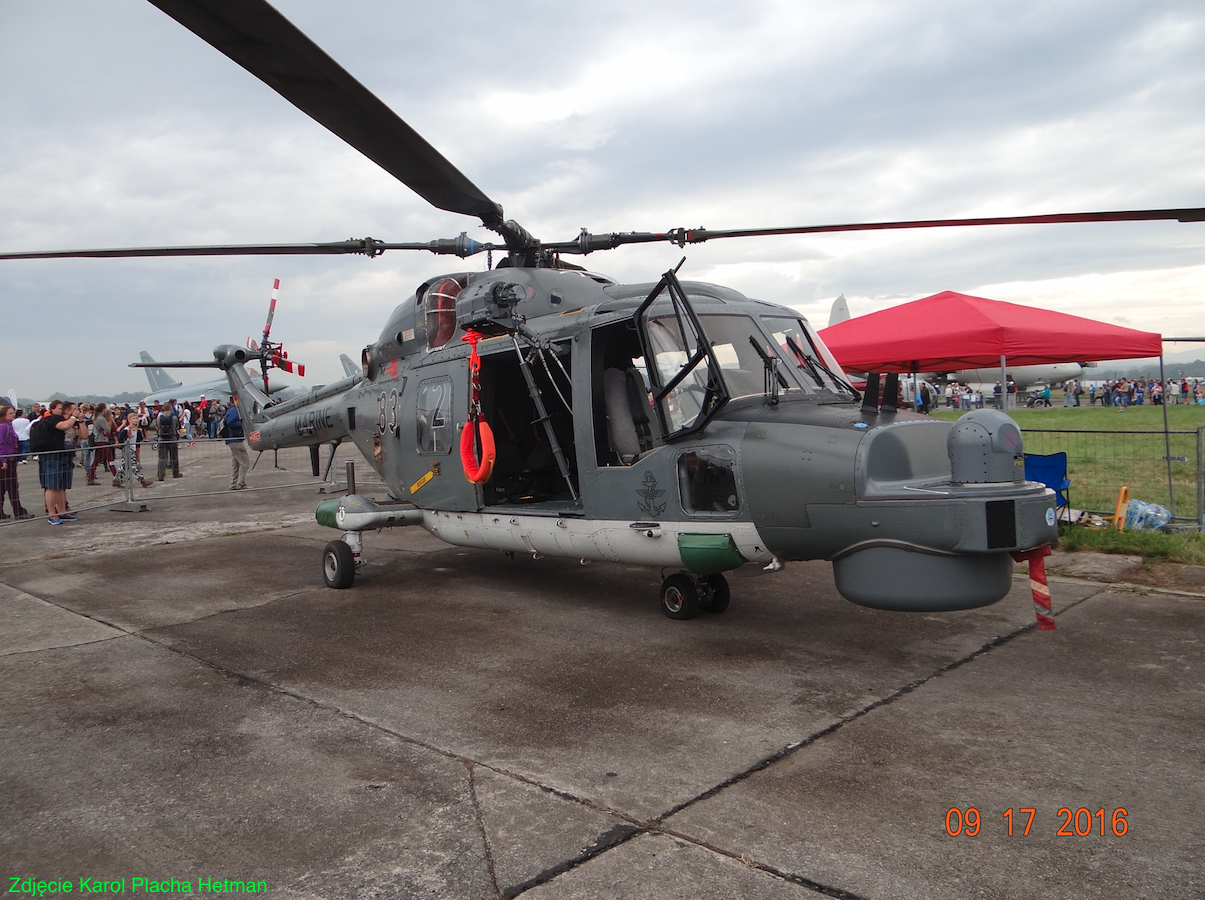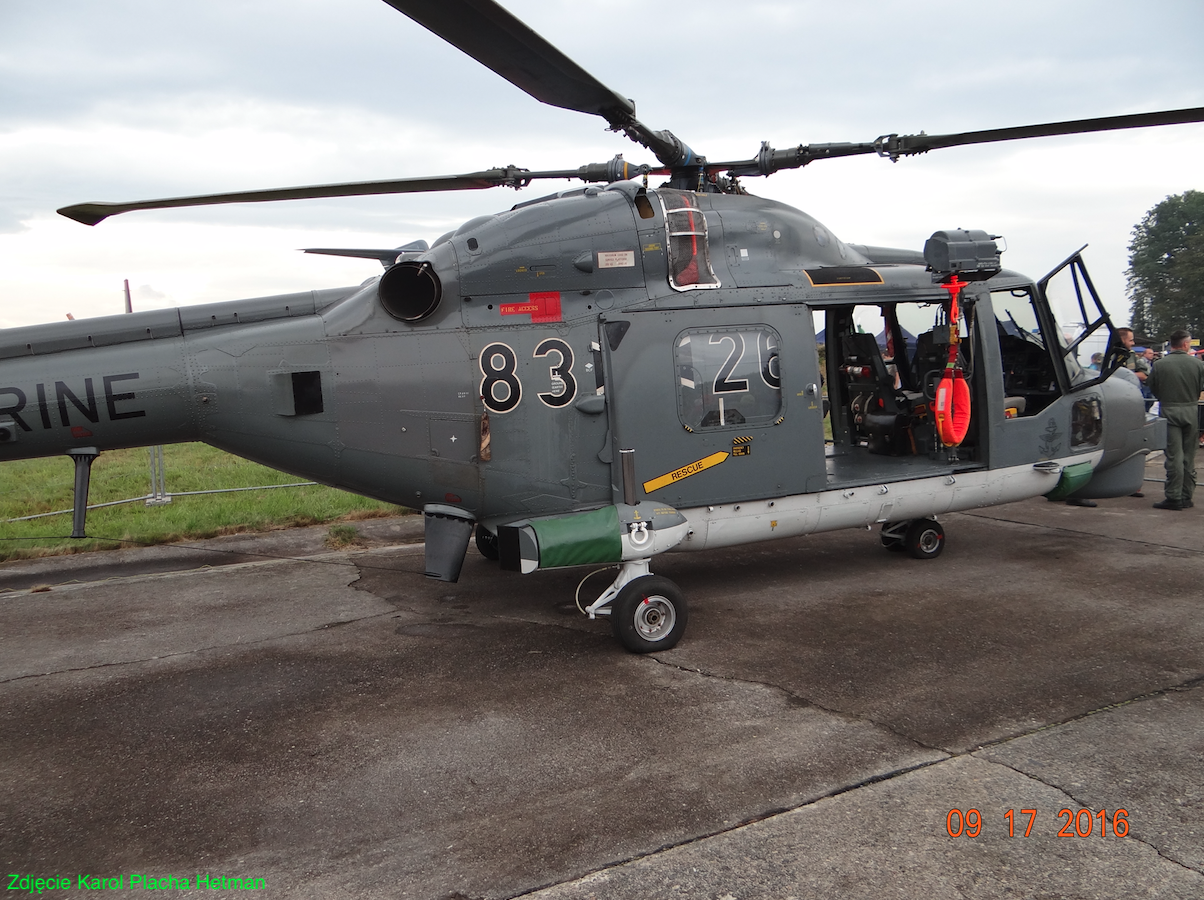Warszawa 2023-04-03
British Westland Lynx multi-role helicopter.
The Westland Lynx is a British multi-role twin-engine military helicopter designed and built by Westland Helicopters. Production was carried out at the Yeovil, Somerset, England factory. The first flight was made on March 21, 1971. Originally, the helicopter was designed as a machine for both civil and maritime use. Military interest led to the development of both combat and naval variants.



The Westland Lynx helicopter entered operational use in 1977, and was later adopted by the armed forces of several countries, serving mainly in the roles of a battlefield support helicopter, combating armored weapons, rescue search operations, anti-submarine warfare. Several land and sea variants of the helicopter were produced, along with several derivatives. The Westland 30 helicopter was produced as a civilian helicopter but was not commercially successful.
The Westland Lynx helicopter is a fully aerobatic helicopter with the ability to perform loops and flips. In 1986, a specially modified Lynx helicopter set the current official Fédération Aéronautique Internationale helicopter flight speed record of 400.87 km/h (249.09 mph).
In the 21st century, a modernized variant of the Westland Lynx was designed as a multi-role combat helicopter, designated the AgustaWestland AW159 Wildcat, to replace the Lynx helicopters currently in service.
Development of the Westland Lynx design.
The original design, then known as the Westland WG.13, was developed in the mid-1960s as a successor to the Westland Scout and Wasp helicopter and as a more advanced alternative to the American UH-1 Iroquois helicopter. The design was to be powered by two Bristol Siddeley BS.360 turbine engines. Under the Anglo-French helicopter agreement, which was signed in February 1967, the French company Sud Aviation (later Aérospatiale) had a 30% share in the production work and Westland 70%. France's intention was to procure the helicopter for its navy and a heavily modified armed reconnaissance variant for the French army. In return, the UK was to buy Aérospatiale Gazelle and Puma helicopters for its armed forces. In October 1969, the French Army canceled its request for the Lynx helicopter, so development of the armed variant was temporarily halted.
The first Lynx prototype made its maiden flight on March 21, 1971. In 1972, Lynx broke the 15 km and 25 km world speed records, flying at 321.74 km/h (199.9 mph), and soon set a new 100 km closed-circuit speed record, flying at 318.504 km/h h (197.9 mph).
The British Army has ordered over 100 Lynx helicopters under the designation Lynx AH.1 (Army Helicopter Mark 1) for several roles such as; transport, armed escort, anti-tank operations (with eight TOW missiles), reconnaissance and evacuation missions. Deliveries of serial helicopters began in 1977.
The helicopter's initial naval variant, known as the Lynx HAS.2 in British service or the Lynx Mk.2 (FN) in French service, differed from the Lynx AH.1 in that it featured tricycle undercarriage, folding main rotor blades, emergency lift system on the water and a nose-mounted radar. The improved Lynx for the Royal Navy, the Lynx HAS.3, had Gem 42-1 Mark 204 engines, an improved final drive and other modifications.
In 1986, a former Lynx demonstrator registered as G-LYNX was specially modified with Gem 60 engines and British Experimental Rotor Program (BERP) rotor blades. On August 11, 1986, this helicopter set an absolute speed record for helicopters over a distance of 15 and 25 km, reaching 400.87 kilometers per hour (216.45 knots; 249.09 mph).
In 2002, it was reported that more than 40 variants of Lynx helicopters had been developed and nearly 400 helicopters were built for various customers. The manufacturer of the helicopters was Westland Helicopters, and after ownership changes is the AgustaWestland concern. The current successor of the Lynx helicopter is the AgustaWestland AW159 Wildcat helicopter.
Powerplant: Two LHTEC CTS800-4N turbine engines, 1,362 shp (1,016 kW) each for take-off, 1,267 shp (945 kW) maximum continuous, or two Rolls-Royce Gem 42-1 engines - 1,000/890 shp (746/664 kW) .
Data T-T Westland Lynx:
Crew of 2-3 airmen. Hold capacity 8 troop / 3,000 lb (1,361 kg). Length 43 feet 9.25 inches (13.3414 m). Helicopter fuselage width 9 ft 7.75 in (2.94 m). Height 10 feet 8 inches (3.25 m). Main rotor diameter 42 ft 0 in (12.80 m). Main rotor area 1385.4 square feet (128.71 m2). Curb weight 7,225 lb (3,277 kg). Max takeoff weight 11,750 lb (5,330 kg). Fuel capacity 210 US gal (252 US gal; 955 l). Maximum speed 175 knots (201 miles per hour, 324 km/h). Range 285 nautical miles (328 mi, 528 km). Combat range with extra fuel 540 mi (620 mi, 1,000 km).
Written by Karol Placha Hetman
